When the warmer months roll around, it’s like a grand opening for mosquitoes and, not so fun fact, infected mosquito bites leading to cellulitis. Picture this: a mosquito dines on your arm, leaving behind not just a welt but also its saliva under your skin. That stuff’s like a party invitation for bacteria that cause cellulitis, such as streptococcus and staphylococcus aureus. Before you know it, parts of your body are throwing a full-blown inflammation bash.
Now, standing water is the Beverly Hills of mosquito real estate. That’s where they lay the welcome mat for future generations. And every nibble they take could be laying the foundation for an infection of the skin that can lead to more serious conditions. Add scratching into the mix, especially with those dirt collectors we call nails, and you’ve just RSVP’d to the possibility of cellulitis. The trick is not to provide these uninvited guests with entry points, like those created when we scratch.
So what’s the big deal at the medical center when you rock up with a bite turned bad? First off, they need to confirm it’s actually cellulitis and not just a case of “bad bug bite.” It’s a matter of identifying the bacteria that cause cellulitis, which might have slipped into your skin via that mosquito’s kiss. And trust me, understanding this can be a game-changer in how you handle bug bites from then onward.
Cellulitis from a bug bite isn’t a tale as old as time, but it’s common enough to warrant a heads-up. The quaint belief that “it’s just a mosquito bite, it’ll go away” has sailed. Proper vigilance and care can turn the tide against developing cellulitis and keep those summer stories about fun times, not infection times.
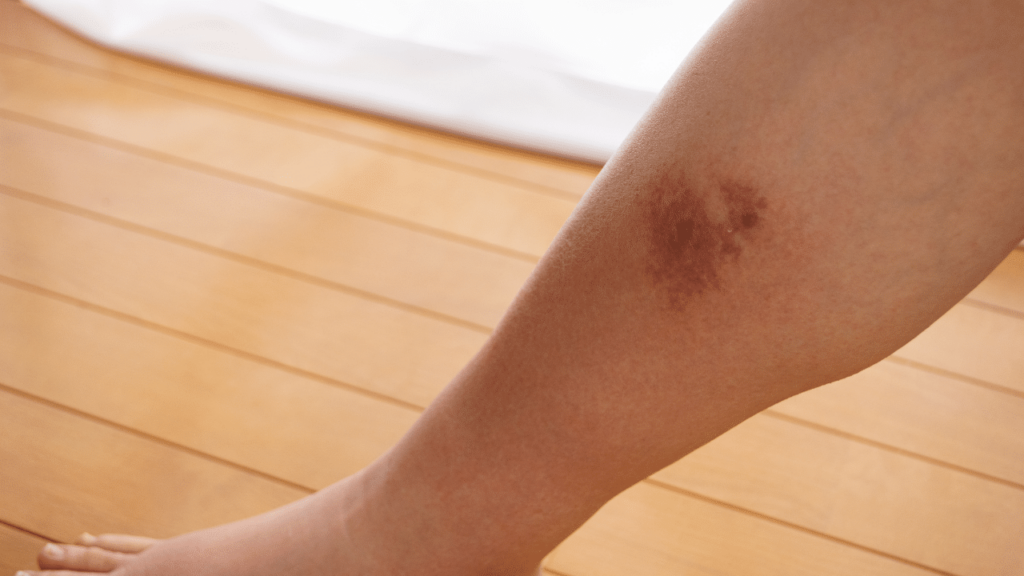
Understanding Cellulitis
Cellulitis is quite the drama queen of skin infections, acting up beneath the skin and pulling in symptoms of cellulitis like redness, swelling, and tenderness. When cellulitis from a bug bite makes its grand entrance, it’s not just any show; it’s a serious condition that demands attention and, often, a trip to a healthcare professional to manage correctly.
What Is Cellulitis?
Let’s break it down: cellulitis is no friend to superficial fun times. It dives deep, aiming for the subcutaneous tissue, and brings along symptoms like redness, warmth, and swelling. Imagine it as the uncool kind of swelling that comes with pain and sometimes a fever. It’s more than skin deep and certainly more than what meets the eye, especially when it’s cellulitis from a bug bite we’re talking about.
Cellulitis From a Bug Bite: The Basics
Summer brings more than just sunshine and ice creams; it’s also peak season for bugs, including those pesky mosquitoes. With increased exposure comes a higher risk of bites, and not all of them play nice. A mosquito bite can go rogue when bacteria find their way into the wound, especially if swollen skin rolls out the red carpet for an infection.
And here’s the thing: not all bug bites will lead to cellulitis, but it’s like rolling the dice with your skin. Spider bites, for example, can also be culprits. Thing is, swollen skin and redness might just be the opening act. If untreated, cellulitis can get into the deeper layers of the skin, causing more than just alarm; it can crank up serious health concerns. Moral of the story? Keep an eye on those bites, especially in the bug-friendly months.
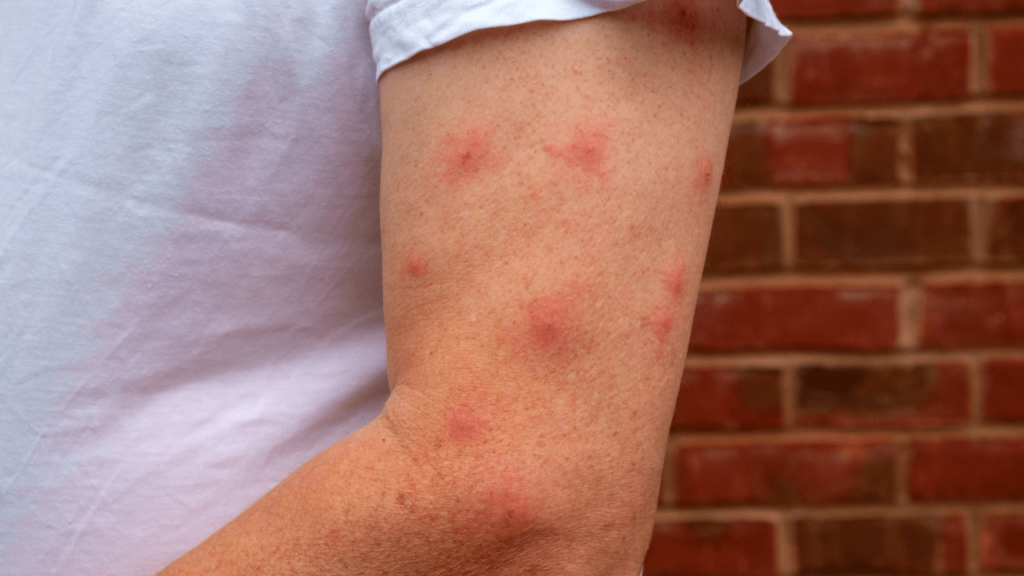
Differentiating Cellulitis From Other Skin Conditions
Alright, cellulitis might like to think it’s unique, but it shares the stage with other conditions like allergic reactions and various skin infections. The kicker? Knowing when it’s severe cellulitis requiring oral antibiotics or if it’s something less sinister. Clues lie in symptoms and how the infection reacts to treatments. Orbital cellulitis, though, is a different beast, targeting areas around the eye and involving the subcutaneous tissue beneath. Keep those peepers peeled for signs that scream more than just an itch.
Causes Behind Cellulitis
Ever wondered how a tiny break in the skin becomes a gateway for trouble? Enter bacteria, finding penthouses in the scratches and cuts we collect, nesting comfortably underneath the skin. Even minor wounds can roll out the welcome mat for bacteria, setting the stage for an infection of the skin that can rapidly turn into cellulitis. The plot thickens when what seems inconsequential turns significant, thanks to those unseen bacterial invaders.
How Infected Mosquito Bites Lead to Cellulitis
Call it the domino effect: a mosquito bite delivers not just a pinch but a dose of mosquito saliva into the mix, cueing the entrance for bacteria. This isn’t your garden-variety annoyance; it’s a cocktail for an infection of the skin. The plot thickens as the bacteria roll up their sleeves and get to work, transforming a simple bite into a potential cellulitis saga.
Ironically, the smaller the bite, the less attention we might pay, until redness and swelling signal that the party’s over and it’s time to take things seriously. This isn’t just about bites; it’s about a reaction that could tip the scales towards cellulitis. Vigilance turns into the best weapon, transforming a would-be infection into a tale of a bite that tried but failed to conquer.
Differential Diagnosis
Alright, imagine you’re gearing up for an epic summer BBQ, but then you notice this raging, red patch of skin where a mosquito decided to have a feast. Now, before jumping to conclusions that it’s cellulitis, doctors play detective to rule out other suspects. For instance, they might wonder if it’s just a simple allergic reaction to the bite, a case of contact dermatitis because maybe you brushed up against something nasty, or even something more exotic sounding like Lyme disease, depending on your adventure’s locale.
So, when cellulitis becomes the main suspect, it’s because it’s got that unmistakable look – red, swollen, and warm, kinda like your grill when it’s ready for those burgers. But unlike firing up the BBQ, where you know exactly what you’re cooking, diagnosing cellulitis isn’t as straightforward. The docs have to consider all possibilities, like infections from other bugs or underlying conditions that might mimic cellulitis, such as deep vein thrombosis. They’re like culinary judges at a BBQ contest, carefully pondering every option before declaring a winner.
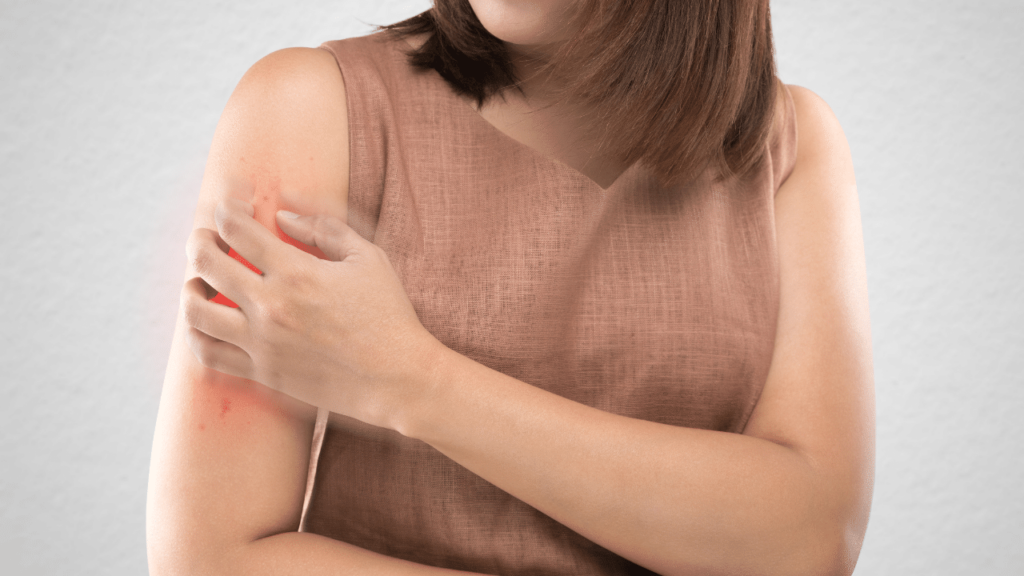
Symptoms and Diagnosis
When the summer hits, and you’re out enjoying the sunshine, the last thing you want is an infected mosquito bite turning into a summer bummer. Recognizing the symptoms of cellulitis early can save a whole lot of discomfort and dodgy looks at the beach. Now, if knowing a thing or two about cellulitis was on your summer reading list, let’s dive in.
Recognizing Symptoms of Cellulitis
So, there you are, flaunting your summer gear, when you notice that the site of a recent mosquito banquet is now looking more like a horror movie than a minor annoyance. We’re talking redness, feels hotter than a sidewalk in July, and it’s swollen. If it starts showing signs like a pus-like discharge, fever and chills, or even swollen lymph nodes, it’s like the mosquito bite is throwing its own after-party. These are the tell-tale symptoms that scream, “Cellulitis might be crashing your summer vibes”.
Can a blood test detect cellulitis?
Now, imagine if you could peek underneath the skin’s surface to see if cellulitis has set up camp. Well, rolling up your sleeve for a blood test can give you a sneak peek. A Complete blood cell (CBC) with differential comes into play, kinda like a behind-the-scenes look at a summer blockbuster. This test counts your white blood cells, the body’s own personal bouncers, fighting off infections. If the count’s higher than the scores of your favorite summer game – over 13,000 WBCs/µL – it might hint at an infection party underneath the skin. Even if the barbecue – err, fever – isn’t raging, and white blood cells aren’t flooding the gates, it could still be cellulitis. It’s like knowing there’s a party without seeing any cars parked outside.
When to Be Concerned About an Infected Mosquito Bite
Summertime isn’t just about lazy days and ice creams; it’s also peak season for those pesky mosquitoes. Now, most mosquito bites are like uninvited guests at a picnic—annoying but harmless. However, when a bite morphs into a swollen, fiery beacon of itchiness, it’s like that uninvited guest decided to crank up the music and invite friends over. If this spot starts looking like a mini-volcano on your skin, accompanied by fever, it’s time to listen more closely to what your body’s saying.
What’s next? If that bite’s redness starts spreading faster than a rumor at a family reunion, or if you start feeling off, like when you’ve had one too many at the summer fair—think fever, chills, or the bite area feels hotter than the pavement in July—it’s a clear signal. These signs are your body’s way of saying, “Hey, something’s not right,” urging you to check in with a healthcare professional. It’s like when you see storm clouds gathering on a beach day; better to pack up before you’re caught in the downpour.

How Healthcare Providers Diagnose Cellulitis
When you waltz into a doctor’s office, flaunting your latest mosquito artwork, how does the healthcare provider pinpoint it’s cellulitis? It’s not like they whip out a magnifying glass and start sleuthing. Nope. They start with the basics: a good look-see and a Q&A session that feels like a pop quiz on your summer activities. They check out the red, angry area, ask about symptoms like fever, chills, and that lovely trip to the lake last week. It’s a bit like being on a game show, except you really don’t want to win this prize.
Tests and Procedures for Confirming Cellulitis
So, you’ve got a spot that’s redder than a lobster at a clambake, and your doc suspects cellulitis. What now? First off, they might want to get a closer look with some imaging tests, like an ultrasound, to check out what’s happening underneath the skin. It’s not exactly summer blockbuster tech, but it does the trick in spotting any hidden shenanigans. Then, there’s the possibility of blood tests to see if your body’s sending out the troops (a.k.a. white blood cells) to battle an infection. Though not a beach read, understanding these tests can help you brace for what’s coming, kinda like checking the weather before a summer trek.
Remember, confirming cellulitis isn’t like snapping a beach selfie; it sometimes requires a bit more digging. Occasionally, if your healthcare provider is really on the ball, they might take a sample from the affected area to culture, ensuring they’re not mistaking a bacterial get-together for something else. It’s a summer investigation into the unknown, making sure they’re treating the right crasher at your skin’s party.
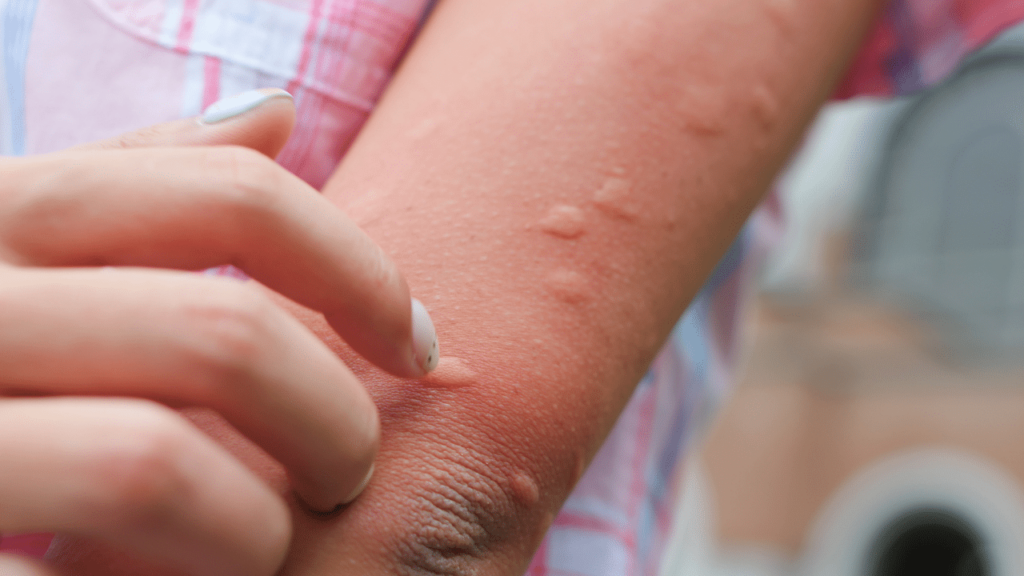
Medical Interventions
Alright, so you’ve got a diagnosis of cellulitis. Before you start thinking it’s like being handed a bad lot at a summer raffle, know this: the Centers for Disease Control and Prevention (CDC) have laid out clear guidelines to tackle this uninvited guest. Treating a bite infection early can prevent the redness and swelling from turning your summer vacation into a staycation. The severity of the infection dictates the game plan, but it’s comforting to know that there’s a strategy behind the madness.
Medical Treatments for Cellulitis
Getting slapped with a cellulitis diagnosis isn’t exactly a win, but thankfully, there’s a playbook ready. Whether the infection is taking it easy or running wild like kids at a pool party, medical professionals have a plan of attack.
Antibiotics: The First Line of Defense
Think of antibiotics as the superhero squad of the medical world, swooping in to calm the chaos of a cellulitis flare-up. For those milder skirmishes, oral antibiotics step into the ring, ready to do battle with the bacteria that decided your skin was the next hot spot. These are the foot soldiers, marching through your system, ensuring the party crashers are shown the door.
But sometimes, cellulitis likes to crash harder than a nephew diving into the pool, bringing severe symptoms to the forefront. That’s when intravenous antibiotics may join the fray, delivering a more powerful punch directly to the bloodstream. It’s like calling in the SWAT team when the local patrols need backup. And let’s not forget the importance of understanding cellulitis risk factors; knowing the enemy helps in designing the best defense strategy. It’s all about ensuring your summer stories are about fun and sun, not redness and run.
When Surgery Becomes Necessary
Sometimes, cellulitis turns stubborn, not waving goodbye with just antibiotics. If the infection digs deep or a nasty abscess forms, doctors might suggest surgery. This isn’t common but think of it as a clean-up crew for the more tenacious infections. It’s like having the ultimate backup plan when the usual tricks don’t do the trick.
Understanding the Role of Surgery in Treating Cellulitis
Let’s break it down – surgery for cellulitis isn’t about dramatic operations and lengthy hospital stays. Instead, it’s often a straightforward procedure to drain an abscess or remove dead, infected tissue. This can accelerate healing when antibiotics alone can’t tackle the infection. It’s a bit like fixing a clogged pipe; sometimes, you’ve got to get in there and clear the blockage to let things flow smoothly again.
Moreover, surgery might be a precautionary measure to prevent the infection from spreading further, especially in critical areas. Doctors weigh the pros and cons carefully because nobody wants to go under the knife without a good reason. Ultimately, the goal is to get the infected area cleaned up and kick-start the recovery process, ensuring the infection doesn’t come back for an encore performance.

Self-Care and Home Remedies
When it comes to tackling the itch and discomfort of mosquito bites or mild cellulitis at home, reaching into the freezer for some ice packs can be a game-changer. Simple, yet effective, they’re like the unsung heroes of home remedies, reducing both swelling and the urge to scratch.
Managing Symptoms at Home
Luckily, managing cellulitis symptoms doesn’t always need a prescription. Over-the-counter pain relievers can be real troopers, easing the pain and turning down the heat on fevers. It’s like having a handy toolkit to dial down discomfort and keep things bearable while your body fights off the infection.
Practical Tips for Relief from Symptom Discomfort
Easing into the soothing embrace of a cool compress can take the edge off the tenderness and swelling cellulitis brings. It’s a little like finding that sweet spot on the pillow – instantly comforting. Pair that with loose, breathable clothing, and you’ve got a comfort combo that helps your skin breathe and heal without added irritation.
Hydration and rest might sound like advice from your grandma, and that’s because it works. Keeping the body hydrated and giving it ample rest are like the silent guardians of recovery, supporting your body’s fight against infection. It’s about creating the best conditions for your immune system to do its thing.
Preventing Future Infections
Preventing future battles with cellulitis means keeping an eye out for allergic reactions and dodging skin infections that can escalate. By guarding the skin like a fortress and treating any breach seriously, you’re less likely to see cellulitis make an unwelcome return. It’s about being proactive, not reactive.
Effective Strategies to Avoid Infected Mosquito Bites
Steering clear of infected mosquito bites begins with the basics – using insect repellent, donning long sleeves and pants, and staying indoors during peak biting times. Think of it as your personal armor against the tiny warriors of the insect world. But when bites do happen, reaching for hydrocortisone cream can be a swift move to reduce itching and inflammation, nipping potential skin infections in the bud before they escalate into something more troublesome.
Also, maintaining a tidy environment reduces the chances of mosquito breeding grounds around your home. Standing water is like a party invitation for mosquitoes, so dumping out any that collects in pots, buckets, and even saucers under plants can help keep the guest list down. It’s a simple step that can make a big difference in keeping those pesky critters at bay.

Risk Factors and Prevention
Understanding the risk factors for cellulitis includes getting familiar with the lymphatic system, acknowledging the realities of swollen skin, recognizing vulnerabilities in the skin and tissues, and identifying those with a weak immune system. It’s about knowing where the risks lie and taking steps to mitigate them.
Knowing the Risk Factors
Factors like a compromised lymphatic system, damaged skin and tissues, and a weak immune system are like open invitations for cellulitis. It’s essential to stay vigilant and address these risks head-on to fortify the body’s defenses against potential infections.
Who Is at Higher Risk for Developing Cellulitis?
Individuals with a weakened lymphatic system or a weak immune system are the front-runners in the unwanted race to cellulitis. Think of the lymphatic system as the body’s internal plumbing system, and the immune system as its security team. When either isn’t up to snuff, it’s like leaving the door unlocked for infections to waltz right in. It’s crucial for those at higher risk to take extra precautions to shield themselves from the threats lurking in innocent cuts or bites.
Moreover, those living with chronic conditions or who have experienced previous episodes of cellulitis need to be on high alert. It’s less about being paranoid and more about being prepared, understanding that their bodies might roll out the red carpet for such infections more readily than others. Staying informed, maintaining good skincare, and adopting preventive measures can significantly tip the scales in their favor, keeping cellulitis at a respectable distance.
Comprehensive Prevention Techniques
When it swings around to summer, folks start wondering whether those pesky mosquito bites could turn into something more, like cellulitis. Now, imagine you’re at a barbecue, swatting away at the air like it owes you money. You’re not just fighting off bugs; you’re trying to dodge a potential rendezvous with a nasty skin infection. The key to keeping the peace and your skin in check involves a blend of savvy prevention measures that go beyond the usual “don’t get bitten” advice. It’s about understanding the whys and the hows so you can enjoy that cookout without winding up searching for symptoms on your phone later.
Protecting Yourself Against Infected Mosquito Bites
Arm yourself with knowledge and bug spray, because when mosquitoes are out, the risk of infected bites leading to cellulitis is real. First off, using insect repellent isn’t just a suggestion; it’s a summer survival tool. Pick one with DEET, picaridin, or oil of lemon eucalyptus to send those buzzers packing. Next up, cover up like you’re trying to avoid the paparazzi. Long sleeves and pants might sound like overkill in the heat, but they’re armor against bites. And let’s not forget about the humble but mighty mosquito net, your best friend for peaceful, bite-free slumbers.
After a day out, if a mosquito still managed to snack on you, stay calm. A dose of hydrocortisone cream can be your first aid hero, keeping things from going from itchy to ouchy. It helps dial down the inflammation, making it less inviting for bacteria to throw a party and cause an infection. Remember, it’s not just about dodging the initial bite; it’s about how you handle the aftermath that counts.

When to Seek Help
Now, nobody likes to interrupt their summer fun with a trip to the doctor, but sometimes that mosquito bite looking like a juicy raisin on your arm is a red flag. Recognizing when a bug bite turns from an annoying itch to a serious concern like cellulitis can save you a heap of trouble. It’s about keeping an eye on the signs and knowing when things have gone from “just slap some cream on it” to “maybe I should get this checked out.”
Identifying the Symptoms and Knowing When to Consult a Healthcare Professional
If that bite or rash starts looking angrier than a hornet at a picnic, it might be time to see a healthcare provider. Swelling, redness spreading like wildfire, and feeling like you’ve just been hit with the flu bus are not to be ignored. They’re your body’s way of waving a big red flag saying, “Hey, something’s not right here.”
Symptoms That Demand Immediate Attention
When is it time to panic? Well, ideally, never. But it’s time to seriously consider a visit to the healthcare provider when that bite site feels hot to the touch, looks more red and swollen by the hour, or if you start running a fever like you’re prepping for a marathon. These are signs your body is struggling to fight off an infection, potentially serious like cellulitis. And if the area starts weeping or you see streaks of red leading away from it, congrats, you’ve got a one-way ticket to immediate care.
Remember, not all heroes wear capes; some come with a medical degree and a prescription pad. These symptoms are your cue to drop the “it’s probably nothing” attitude and get professional help. Ignoring them could lead to nastier things like blood infections, which are about as fun as a sunburn on the first day of vacation. Pro tip: A blood test can help detect cellulitis, giving you and your doc a heads-up on what’s going on beneath the surface.
Complications and Prognosis
Now, let’s get serious for a hot minute. You know how in cartoons, a small snowball rolls down a hill and turns into an avalanche? That’s kind of how untreated cellulitis can go. It starts as a simple bug bite, then bam, you’re talking about complications like blood and bone infections. Not exactly the summer memories anyone’s looking to make.
Understanding Possible Complications
Living life on the edge might sound cool until it’s your skin’s edge we’re talking about, dealing with cellulitis that decided to go rogue. Complications like bone and blood infections are no joke. They’re the kind of uninvited guests that overstay their welcome, leading to more serious health issues if not tackled early.
Addressing Complications Timely to Avoid Further Issues
When cellulitis decides to throw a curveball and dive deep into more serious territory like blood infections, timing isn’t just everything; it’s the only thing. Catching these complications early means you’re not just saving yourself a lot of pain and trouble, you’re literally getting ahead of something that could put your summer on hold, or worse. A blood infection, also known as sepsis, is the body’s over-the-top response to an infection, and it’s as serious as finding a snake in your sleeping bag.
Regular check-ins with your doc can be the difference between a quick recovery and a summer spent trying to explain why you’re walking around with an IV instead of a popsicle. They can keep tabs on your condition, making sure any scary complications like blood infections are caught faster than a kid chasing after an ice cream truck. With the right interventions, even severe cellulitis can be managed, turning what could have been a disaster into just a minor bump in your summer plans.
Outlook for Those Affected by Cellulitis
When someone gets hit with cellulitis, it’s easy to think the sky is falling. But, with the right treatment, the future looks a lot brighter. Taking antibiotics as prescribed can turn the tide against this infection. It’s like sending in the cavalry; those meds go to work, making sure the cellulitis can’t spread. And for those worried if a tiny mosquito can bring on such a hassle, knowing the signs and getting treatment early can keep a small issue from turning into a big problem. So, while cellulitis can seem scary, with a good plan, it’s more like a bump in the road than a dead end.
Prognosis With Adequate Treatment
Got cellulitis treatment on your mind? Think antibiotics and maybe a cool pack to chill out the affected area. The magic of modern medicine means most folks see their cellulitis clear up after a week or two of popping those antibiotic pills. But let’s not forget our icy friend, the cold compress, offering a soothing touch to those tender spots. This dynamic duo of treatments can turn the tide, helping skin bounce back.
But hey, even with treatment, cellulitis can be a bit of a stubborn guest, especially if it’s gotten a bit more severe. What’s important is sticking to the plan. If the cellulitis has cozied up to the lymphatic system or decides to take an unexpected journey to other body parts, more intensive care might be needed. Yet, with diligent treatment and a bit of patience, most folks can wave goodbye to cellulitis without inviting it back for a return visit.
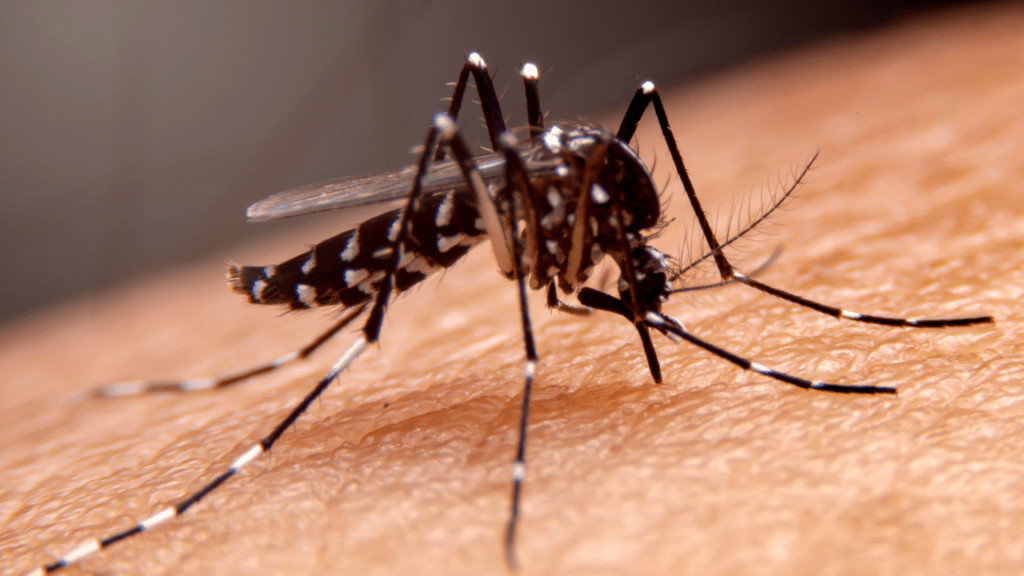
Conclusion
In conclusion, understanding the risks and preventive measures for cellulitis, especially from infected mosquito bites, is crucial for enjoying a worry-free summer. Mosquitoes may be small, but their bites can lead to significant health issues if not managed properly. By recognizing the early signs of cellulitis, such as redness, swelling, and warmth around the bite area, and seeking timely medical attention, you can prevent a minor inconvenience from turning into a major health concern. Utilizing insect repellents, keeping your environment free of standing water, and maintaining good personal hygiene are effective strategies to minimize the risk of infections.
Moreover, staying vigilant and proactive about skin health can help ensure that any potential issues are addressed promptly. Regularly checking for symptoms, adhering to prescribed treatments, and following up with healthcare providers are essential steps in managing and preventing cellulitis. By taking these precautions, you can focus on enjoying the best parts of summer without the worry of infections, ensuring that your outdoor adventures remain memorable for all the right reasons.

